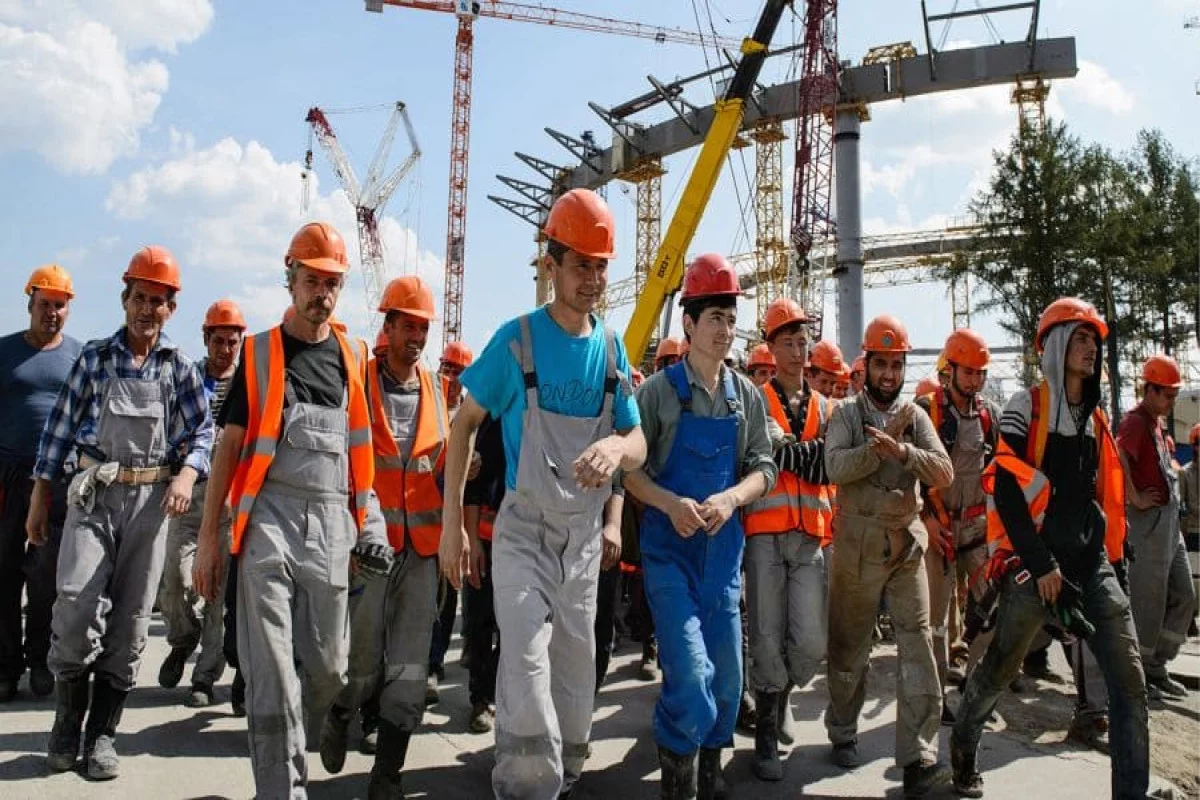
In recent years, one of the main problems of the Russian economy has been the shrinking labor force. A demographic decline, aging population, and a decrease in the number of working-age citizens have led to a chronic shortage of workers. According to a new report by the Eurasian Development Bank (EDB), this trend has become persistent.
Between 2010 and 2024, the number of employed people in Russia’s economy grew by more than 4 million. However, by the summer of 2025, unemployment had fallen to a record low of 2.2%. Normally, the natural rate of unemployment is around 4–5%, which means this figure clearly indicates a labor shortage.
Experts say the labor market can only be stabilized by increasing labor productivity, attracting more migrant workers, and encouraging older people to stay in the workforce.
Over the past 15 years, Russia has received about 250,000 foreign workers annually, making up nearly 3% of the working-age population.
The 2019 pension reform also affected the labor market, with more elderly people continuing to work. If in 2016–2018 around 13% of workers were over 60, now that share has grown to 16.7%. Meanwhile, wages have increased by nearly 18% in the past two years, helping to bring some workers back into the economy.
Nevertheless, the staff shortage remains acute. According to the Central Bank of Russia, most companies reported a lack of workers in the second quarter of 2025 and plan to expand recruitment soon.
The main reason lies in demographic changes. Russia’s population is aging, and the number of able-bodied citizens is rapidly declining. According to EDB and UN forecasts, by 2040 nearly 40% of all workers will be over 50. This could lead to lower productivity, reduced mobility, and slower economic growth.
The shortage is most severe in manufacturing, trade, logistics, IT, and healthcare. For instance, about 400,000 workers are missing in manufacturing, over 300,000 in trade, and nearly 200,000 in transport and logistics.
Experts point to several causes: demographic decline, brain drain, the mismatch between education and market demand, and the growing defense sector that absorbs a large portion of the workforce.
Labor shortages have already changed the work environment — employees are taking on more responsibilities, leading to fatigue and reduced efficiency.
The Ministry of Labor estimates that the shortage will persist until at least 2030, with labor demand expected to reach 3.1 million workers by then.
Experts believe that the crisis can be mitigated through migration policy, technological development, automation, higher productivity, and improved public health to extend working age.
Ultimately, the labor shortage is becoming Russia’s new reality — its economy must now rely more on technology and efficiency than on manpower.
Read “Zamin” on Telegram!Users of Меҳмон are not allowed to comment this publication.














